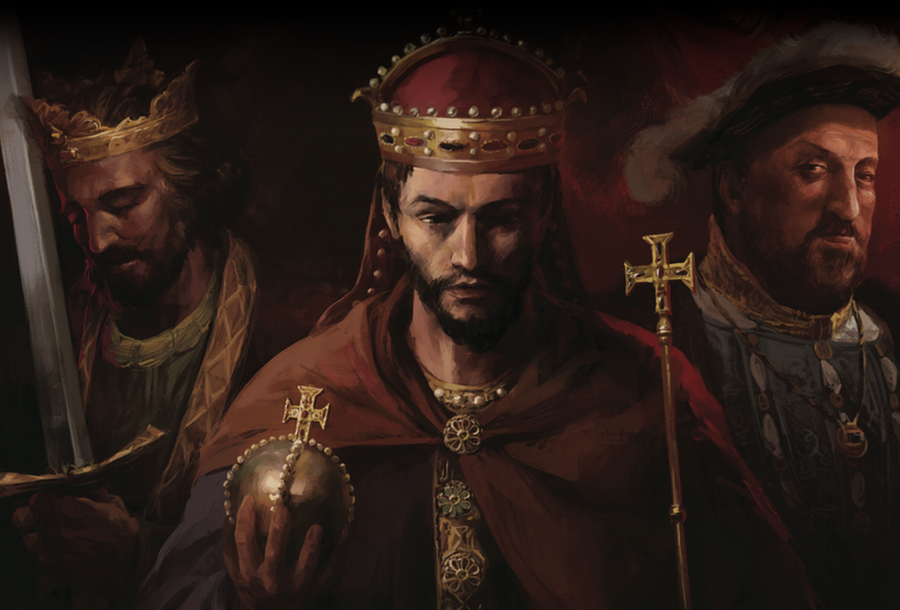Our bone-chilling countdown of the deadliest monarchs continues
Subscribe to All About History now for amazing savings!
Whether through violent fits of rage or cold calculation, these ten kings ensured that the pages of history books dedicated to them were written in blood, but which of them takes the crown as the deadliest? Click Here to read kings 10 through 6.
5. RICHARD I
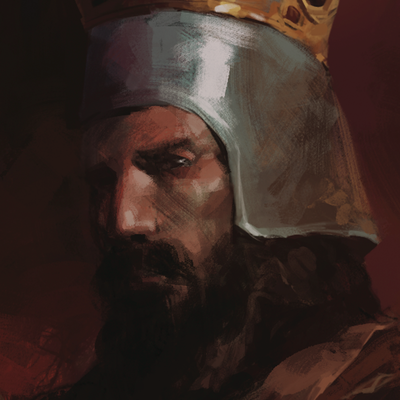
The man dubbed ‘Lionheart’ spent most of his life fighting. He first took up arms against his father, Henry II, in 1173 and continued to aggressively pursue the throne until Henry’s death in 1189, when some quite reasonably suggested that Richard had driven the king to his grave.
Blood was spilled on the same day that Richard took the crown, when the barring of Jewish figures from the coronation was misinterpreted as an order to instigate violence against all of London’s Jews. Richard ordered the executions of those who took part, but the instances of copycat ‘Christian’ violence would set the tone for a king who was desperate to join the Crusades.
Together with Phillip II of France, who had assisted Richard in his fight for the throne, England joined the Third Crusade. Spending the bulk of his father’s treasure chest to raise a new army, Richard set off for the Holy Lands in 1190. He blazed a bloody trail through Sicily and Cyprus before arriving at Acre, Israel, in 1191.
Following the successful siege of the city, he ordered the execution of 2,700 Muslim prisoners. The crusade eventually ground to a halt and Richard was forced to retreat in 1192, only to be captured in Vienna by Leopold V. Once ransomed, he discovered that his brother, John, had given Normandy back to King Phillip in his absence.
In 1196, Richard built castles in Normandy to fortify his presence. He continued his war against Phillip until 1199, when he was struck by an arrow from the nearly undefended Châlus-Chabrol chateau. The wound turned fatally gangrenous – an undignified end for the warrior king.
4. EDWARD I
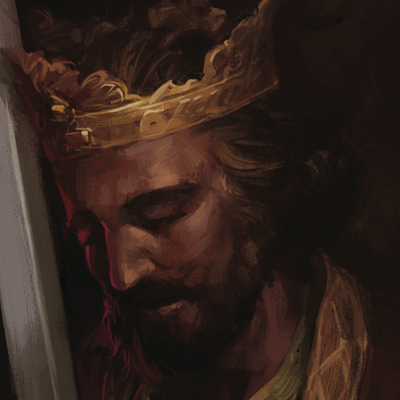
When Edward I came to the throne he had a very clear goal in mind: to take back what he saw as English land which had been stolen.
Upon Henry III’s death Edward returned to England from the Crusades and started planning a military campaign in Wales. Beginning with a successful invasion in 1277 he executed the Welsh leader, Llewelyn, in 1282 and Llewelyn’s brother, David, a year later in response to rebellions.
The war in Wales had a devastating effect on the nation’s finances. This was compounded when Edward responded violently to French King Philip reclaiming the territory of Gascony by sailing to attack in 1297, later returning to quell the Scottish rebellion. Edward intervened to such an extent that the Scots allied with the French and attacked Carlisle. Edward invaded in retaliation, beginning a brutal and lengthy conflict that earned him his nickname, Hammer of the Scots.
3. ERIK XIV
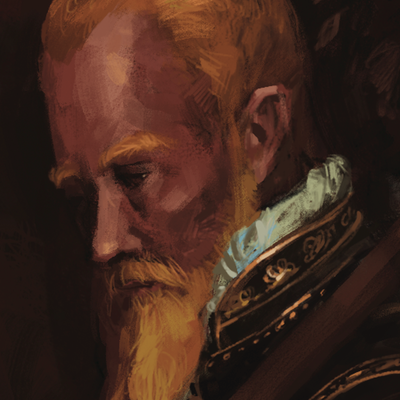
While many kings can lay claim to ordering the deaths of hundreds – even thousands – during the course of their reign, not many can say they committed murder with their own hands.
The king of Sweden Erik XIV suffered from mental instability, but not to an extent that made him incapable of ruling. He strengthened Sweden’s position in northern Europe by claiming territory in Estonia, leading to the Seven Years’ War of the North which played out between 1563 and 1570. Although his military campaigns were successful Erik’s mental state was rapidly deteriorating and evidence points towards schizophrenia.
He became paranoid, eager to believe rumours of treason. He even executed two guards for ‘making fun of the king’. But it would be the Sture murders that would break him. Believing that the noble family would make a play for the throne, Erik began to persecute the Stures – specifically Nils Sture. In 1567, one of Sture’s pages was tortured until he told Erik what he wanted to hear. Following a trial, death sentences began to be issued but the king could not make up his mind. Finally, he visited them at the castle in Uppsala (north of Stockholm) where they were imprisoned and told them that they were forgiven. When Erik left he discovered that a rebellion was underway, led by his brother, John. It was only a few hours later that Erik returned and stabbed Nils Sture before ordering the execution of the others.
2. HENRY VIII
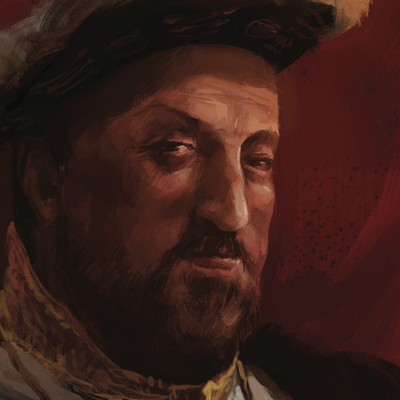
English king Henry VIII’s voracious nature and hot temper have become the stuff of legend. He is renowned for being a man of ferocious appetites – in all aspects of life – and he was prepared to use any means necessary to quell his opposition.
Shortly after ascending to the throne, Henry married Catherine of Aragon, as his father, Henry VII, had wanted to secure an alliance with Spain. At the time he executed Edmund Dudley and Richard Empson – two of his father’s advisors – on the grounds of treason. This was to become a pattern for Henry. From Thomas More to Thomas Cromwell, anyone who Henry perceived as either a threat to the throne or to his secession from the Catholic church was liable to find themselves with their head on the block.
However, he’s most notorious for his list of spouses, driven by his desperation for a male heir and straightforward lust. The annulment of his marriage to Catherine of Aragon was prompted by a combination of the two as Anne Boleyn had already caught his eye. As we all know, Anne Boleyn did not last long before facing the executioner’s axe – having been dubiously accused of infidelity, treachery and incest. Anne was followed by Jane Seymour, who died in childbirth; Anne of Cleves, who Henry soon separated from; and then the unfortunate Catherine Howard. Henry accused Catherine of being unfaithful with her secretary, Francis Dereham, while she claimed that Dereham had raped her. Despite her protests, she was sent to her death. Fortunately for his last wife, Catherine Parr, he died before she could fall out of his favour.
The exact number of executions ordered by Henry VIII has not been conclusively agreed upon, but it is generally believed to be between 57,000 and 72,000. As a gruesome aside, he also made ‘death by boiling’ a legitimate form of execution.
1. LEOPOLD II
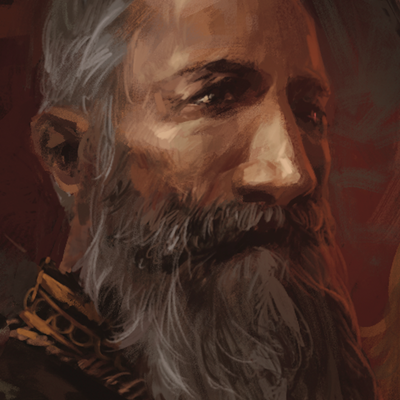
Desperate to establish a colony overseas, Belgian king Leopold II turned to Africa and the potential riches of the Congo. To circumvent his own parliament, he created a dummy organisation called the International African Association, which he claimed would act in the interests of philanthropy and scientific research with a view to converting the citizens to Christianity. It was all completely legal and it gave the monarch the freedom to act however he wanted in the land under his control.
Its stated aim could not have been further from the truth. What had attracted Leopold to the Congo, in addition to the notion of creating an empire, was the tremendous supply of rubber in the area. He would spare nothing in order to get what he wanted. Despite having promised that he would protect the people of the Congo from slavers, Leopold promptly and brutally turned the country into a slave state.
The treatment of the workers was savage and uncompromising. Leopold allowed some missionaries into the Congo in order to allay the fears of foreign powers who believed he might be doing exactly what he was doing, and reports began to reach Europe about the maiming and executions of the men and women working on the plantations, as well as of the mass dumping of corpses.
It’s impossible to know exactly how many people died during Leopold’s rule of the Congo but the estimated figure is in the millions. The atrocities led to the establishment of the first human rights movement and Leopold was finally compelled to give up the Congo to the Belgian parliament in 1908.
Originally published in All About History 3
Subscribe to All About History now for amazing savings!

